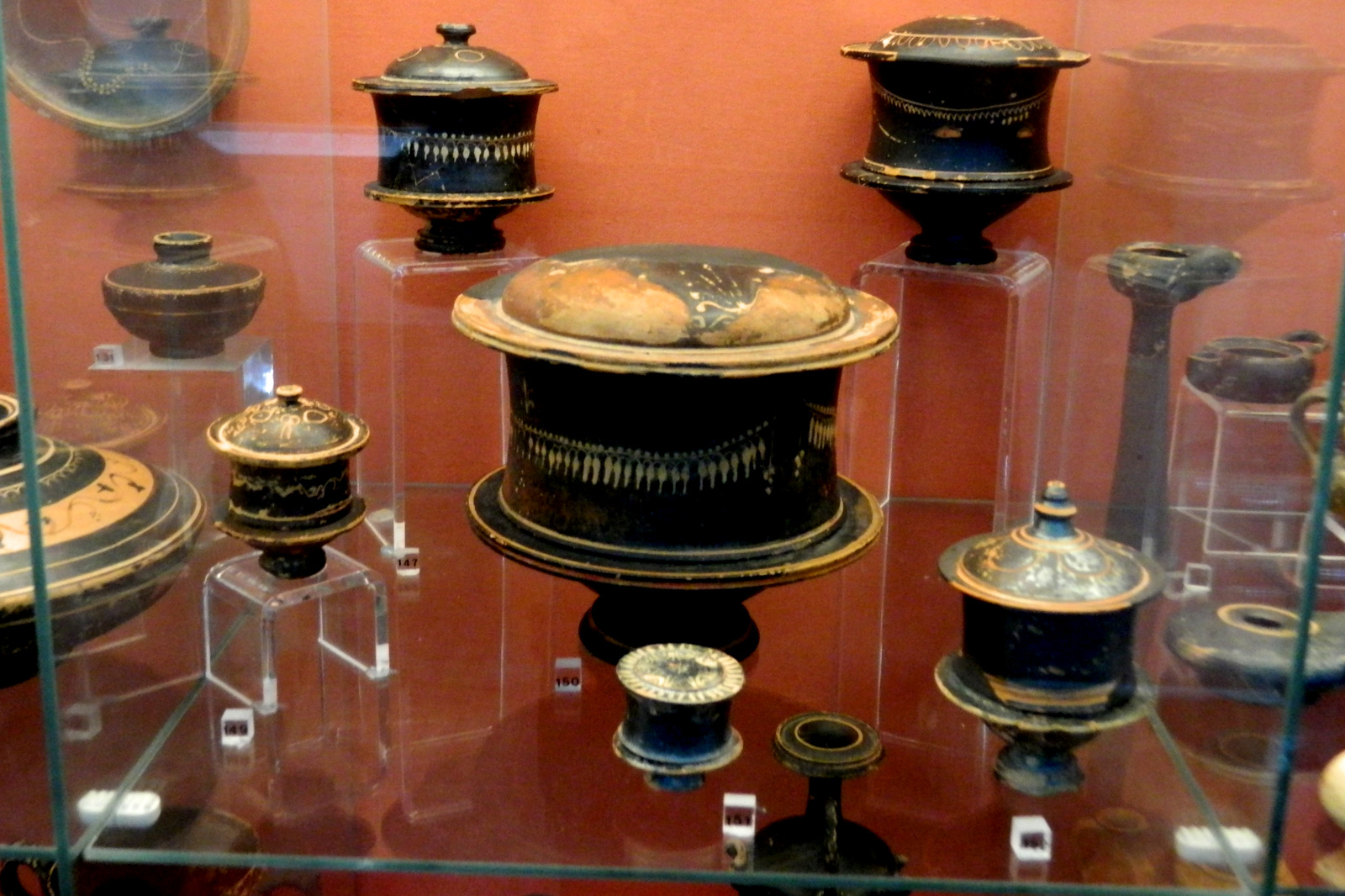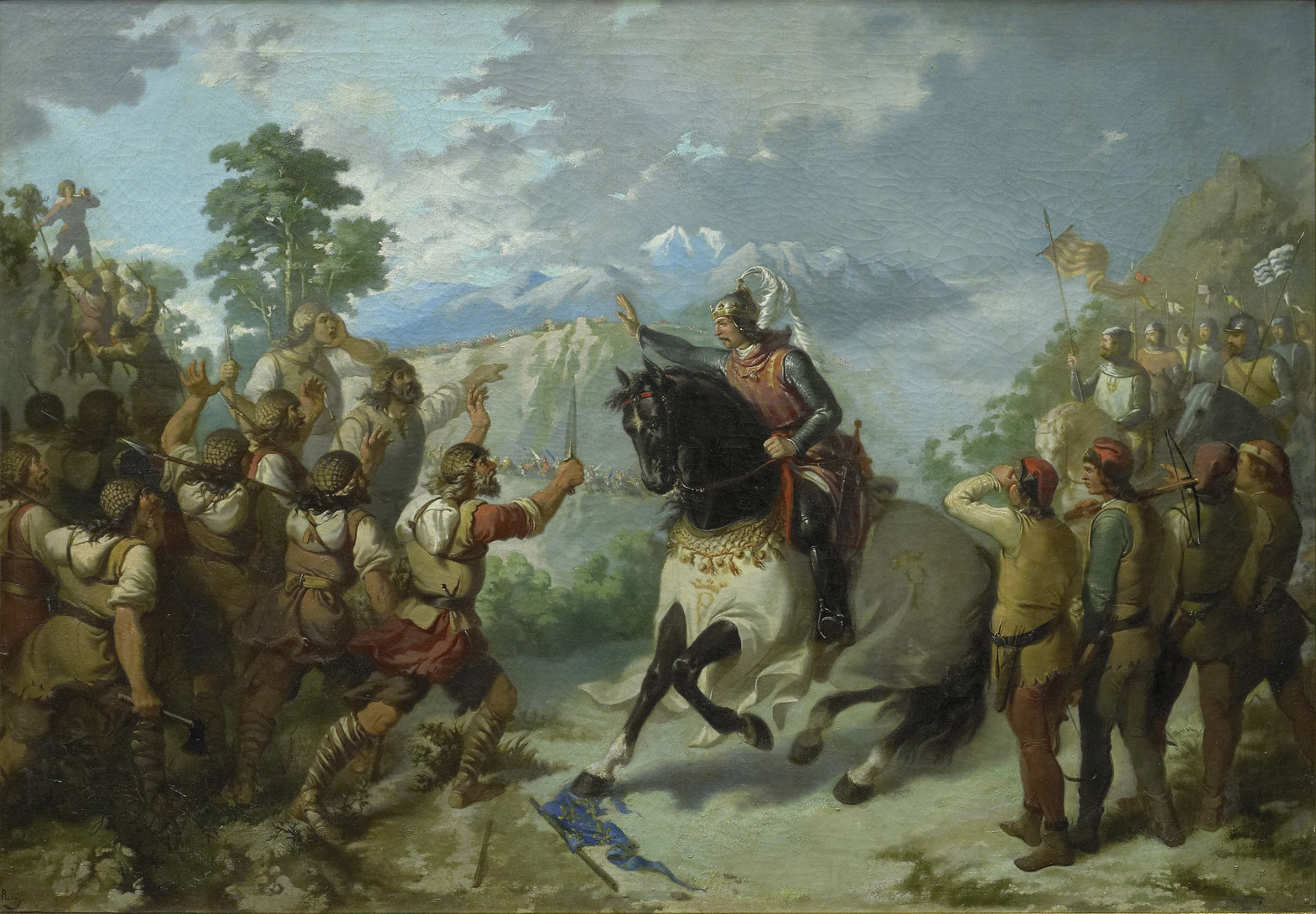|
Duchy Of Neopatras
The Duchy of Neopatras ( ca, Ducat de Neopàtria; scn, Ducatu di Neopatria; gr, Δουκάτο Νέων Πατρών; la, Ducatus Neopatriae) was a principality in southern Thessaly, established in 1319. Officially part of the Kingdom of Sicily, itself part of the Crown of Aragon, the duchy was governed in conjunction with the neighbouring Duchy of Athens, it enjoyed a large degree of self-government. From the mid-14th century, the duchies entered a period of decline: most of the Thessalian possessions were lost to the Serbian Empire, internal dissensions arose, along with the menace of Turkish piracy in the Aegean and the onset of Ottoman expansion in the Balkans. Enfeebled, the Catalan possessions were taken over by the Florentine adventurer Nerio I Acciaioli in 1385–1390. The title of Duke of Neopatras was held by the heir of the King of Sicily. History When the Greek ruler of Thessaly, John II Doukas, died in 1318 without an heir, his domains fell into chaos. The Alm ... [...More Info...] [...Related Items...] OR: [Wikipedia] [Google] [Baidu] |
History Of Thessaly
The history of Thessaly covers the history of the region of Thessaly in north-central Greece from antiquity to the present day. Topography Thessaly is characterized by the large Thessalian plain, formed by the Pineios (Thessaly), Pineios River, which is surrounded by mountains, most notably the Pindus mountain range to the west, which separates Thessaly from Epirus. Only two passes, the Porta, Thessaly, Porta pass and, in the summer, the pass of Metsovo, connect the two regions. From the south, the narrow coastal pass of Thermopylae connects Thessaly with southern Greece. In the north Thessaly borders on Macedonia (region), Macedonia, either through the coast or the pass of Servia, Greece, Servia towards Thessalonica, or in the northwest towards western Macedonia. Antiquity The first evidence of human habitation in Thessaly dates to the late Paleolithic, but in the early Neolithic this expanded rapidly. Over 400 archaeological sites dating to the period are known, including fortifi ... [...More Info...] [...Related Items...] OR: [Wikipedia] [Google] [Baidu] |
Ottoman Empire
The Ottoman Empire, * ; is an archaic version. The definite article forms and were synonymous * and el, Оθωμανική Αυτοκρατορία, Othōmanikē Avtokratoria, label=none * info page on book at Martin Luther University) // CITED: p. 36 (PDF p. 38/338) also known as the Turkish Empire, was an empire that controlled much of Southeast Europe, Western Asia, and Northern Africa between the 14th and early 20th centuries. It was founded at the end of the 13th century in northwestern Anatolia in the town of Söğüt (modern-day Bilecik Province) by the Turkoman tribal leader Osman I. After 1354, the Ottomans crossed into Europe and, with the conquest of the Balkans, the Ottoman beylik was transformed into a transcontinental empire. The Ottomans ended the Byzantine Empire with the conquest of Constantinople in 1453 by Mehmed the Conqueror. Under the reign of Suleiman the Magnificent, the Ottoman Empire marked the peak of its power and prosperity, as well a ... [...More Info...] [...Related Items...] OR: [Wikipedia] [Google] [Baidu] |
Pharsalus
''Pharsalus''Melichar L (1906) ''Monographie der Issiden. (Homoptera). Abhandlungen der K. K. Zoologisch-botanischen Gesellschaft in Wien.'' Wien 3: 1-327 21 is the type genus of planthoppers in the subfamily Pharsalinae (family Ricaniidae); it was erected by Leopold Melichar in 1906. It appears to be monotypic In biology, a monotypic taxon is a taxonomic group (taxon) that contains only one immediately subordinate taxon. A monotypic species is one that does not include subspecies or smaller, infraspecific taxa. In the case of genera, the term "unispec ... containing the single species ''Pharsalus repandus'' Melichar, 1906. References External links * Ricaniidae {{Fulgoromorpha-stub ... [...More Info...] [...Related Items...] OR: [Wikipedia] [Google] [Baidu] |
Domokos
Domokos ( el, Δομοκός), the ancient Thaumacus or Thaumace (Θαυμακός, Θαυμάκη), is a town and a municipality in Phthiotis, Greece. The town Domokos is the seat of the municipality of Domokos and of the former Domokos Province. The town is built on a mountain slope overlooking the plain of Thessaly, 38 km from the city of Lamia. History Ancient Modern The area of Domokos became part of Greece in 1881 when the Ottoman Empire ceded Thessaly and a few adjacent areas to Greece. Until 1899, it was part of the Larissa Prefecture. Battle of Domokos In 1897, during the Greco-Turkish War, about 2,000 Italian volunteers under the command of Giuseppe Garibaldi's son, Ricciotti Garibaldi, helped the Greeks in the Battle of Domokos. Among them there was also a member of the Italian Parliament, Antonio Fratti, who died in the fighting. The Turkish Army was victorious over the Greek Army. Transport The town is served by Domokos railway station on the Piraeus–P ... [...More Info...] [...Related Items...] OR: [Wikipedia] [Google] [Baidu] |
Siderokastron
Siderokastron ( el, Σιδηρόκαστρον) was a medieval fortified settlement on Mount Oeta in Central Greece. Siderokastron is first mentioned in the 13th century. Some scholars have identified it with a place on Mount Knemis ( Buchon), Delphi or Arachova (Gregorovius), or Heraclea Trachis ( Neroutsos), but based on the description in the ''Chronicle of the Morea'', it is most likely to be identified with the ruined fortified settlement on a rocky plateau found on an eastern outlier of Mount Oeta, on the banks of the upper course of the Asopos River near the modern villages of Pavliani and Koumaritsi. This identification was made by G. Kolias in 1933. Its name ("Iron Castle" in Greek) possibly derives from the nearby pass of Sideroporta, which gave it a certain strategic importance, as it controlled the mountain roads from the Asopos to the Boeotic Cephissus, and to Dyo Vouna. It is one of the castles popularly known as " Kastro tis Orias". Today it is known as "Kouvelos" ... [...More Info...] [...Related Items...] OR: [Wikipedia] [Google] [Baidu] |
Loidoriki
Lidoriki ( el, Λιδωρίκι, Katharevousa: Λιδωρίκιον) is a village and a former municipality in Phocis, Greece. Since the 2011 local government reform it is part of the municipality Dorida, of which it is the seat and a municipal unit. In 2011 the population was 3,388. Its area is 409.577 km² covering nearly one-fifth of Phocis. Lidoriki is built on the western slopes of Mount Giona and over the Mornos river valley. It is the centre of the mountains of Dorida. Location Lidoriki is located west of Amfissa, northwest of Itea and east-northeast of Nafpaktos. Lidoriki is located above the Mornos artificial reservoir, formed by the Mornos Dam, completed in 1974. The reservoir supplies most of the drinking water used in Athens. Lidoriki is also connected to Amfissa via the largest tunnel in Greece with 16.5 km length. This is not a street tunnel, but an aquaeduct for the water from the Mornos reservoir. History Lidoriki is attested since the late 9th century ... [...More Info...] [...Related Items...] OR: [Wikipedia] [Google] [Baidu] |
Zetounion
Lamia ( el, Λαμία, ''Lamía'', ) is a city in central Greece. The city dates back to antiquity, and is today the capital of the regional unit of Phthiotis and of the Central Greece region (comprising five regional units). According to the 2011 census, the Municipality of Lamia has a population of 75.315 while Lamia itself a population of 52,006 inhabitants. The city is located on the slopes of Mount Othrys, near the river Spercheios. It serves as the agricultural center of a fertile rural and livestock area. Name One account says that the city was named after the mythological figure of Lamia, the daughter of Poseidon and queen of the Trachineans. Another holds that it is named after the Malians, the inhabitants of the surrounding area. In the Middle Ages, Lamia was called Zetounion (Ζητούνιον), a name first encountered in the 8th Ecumenical Council in 869. It was known as Girton under Frankish rule following the Fourth Crusade and later El Citó when it was control ... [...More Info...] [...Related Items...] OR: [Wikipedia] [Google] [Baidu] |
Alfonso Fadrique
Don Alfonso Fadrique ( en, Alfonso Frederick; ca, N'Anfós Frederic d'Aragó; died 1338) was the eldest and illegitimate son of Frederick II of Sicily. He served as vicar generalHe is referred to with the magniloquent title ''magnificus dominus, dominus Alfonsus, excellentissimi domini, domini Federici, Dei gratia regis Siciliae filius, ac felici Francorum exercitui in ducatu Athenarum et in aliis partibus Romanie imperii presidens'', that is "Magnificent lord, don Alfonso, son of the most excellent lord don Frederick, by the grace of God King of Sicily and president of the fortunate army of the Franks in the duchy of Athens and other parts of the Roman Empire". of the Duchy of Athens from 1317 to 1330. He was first proclaimed vicar general by his father in 1317 and sent off to govern Athens on behalf of his younger half-brother Manfred. He arrived in Piraeus with ten galleys later that year, but Manfred had died and was succeeded by another brother, William II. In the year of ... [...More Info...] [...Related Items...] OR: [Wikipedia] [Google] [Baidu] |
Battle Of Halmyros
The Battle of Halmyros, known by earlier scholars as the Battle of the Cephissus or Battle of Orchomenos, was fought on 15 March 1311, between the forces of the Frankish Duchy of Athens and its vassals under Walter of Brienne against the mercenaries of the Catalan Company, resulting in a decisive victory for the mercenaries. Engaged in conflict with their original employers, the Byzantine Empire, the Catalan Company had traversed the southern Balkans and arrived in southern Greece in 1309. The new Duke of Athens, Walter of Brienne, hired them to attack the Greek ruler of neighbouring Thessaly. Although the Catalans conquered much of the region for him, Walter refused to pay them and prepared to forcibly expel them from their gains. The two armies met at Halmyros in southern Thessaly (or at the Boeotic Cephissus, near Orchomenos, according to an earlier interpretation). The Catalans were considerably outnumbered and weakened by the reluctance of their Turkish auxiliaries to f ... [...More Info...] [...Related Items...] OR: [Wikipedia] [Google] [Baidu] |
Catalan Company
The Catalan Company or the Great Catalan Company (Spanish: ''Compañía Catalana'', Catalan: ''Gran Companyia Catalana'', Latin: ''Exercitus francorum'', ''Societas exercitus catalanorum'', ''Societas cathalanorum'', ''Magna Societas Catalanorum'') was a company of mercenaries led by Roger de Flor in the early 14th century and hired by the Byzantine Emperor Andronikos II Palaiologos to combat the increasing power of the Anatolian beyliks. It was formed by '' almogavar'' veterans of the War of the Sicilian Vespers, who had remained unemployed after the signing in 1302 of the Peace of Caltabellotta between the Crown of Aragon and the French dynasty of the Angevins. Origin The military demands of the Reconquista stimulated the formation of the elite light infantry known as the ''almogavars'' on the Iberian peninsula during the 13th century. These troops were used quite effectively by the Crown of Aragon for other imperial ventures in the Mediterranean, particularly the War of the ... [...More Info...] [...Related Items...] OR: [Wikipedia] [Google] [Baidu] |



